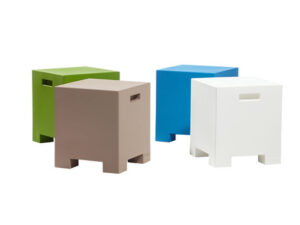Ever gotten stuck on a new project?
Have you ever found yourself trapped in the middle of a project?
Then you should check this out.
We offer some tips/tricks on where to begin while working on design projects in the sections below.
Here are six great recommendations for “tweaking your décor,” whether you’re outfitting a new house, remodelling your kitchen, or simply looking for inspiration to beautify your home.
Image by sixinch from Sixinch Royal Set (Louis)
1. Determine your Client’s Personality
What do they want their room to feel like? Here’s a simple test you can carry out to help you define their personal style: Take a look at what they have in their closet. Do they prefer fitted clothes or those that are more relaxed and comfortable? Do they have a preference for particular colours or patterns? Another technique to figure out their style is to come up with a list of key phrases that describe how your client wants a room to feel. Are they looking for something traditional, formal, or elegant? Playful, amusing, and inviting? Monochrome, sleek, and contemporary?
When hired to help clients design the interiors of their homes , take note of design inspirations in all aspects of their life , you can also use this to kickstart your conversation with them. Recall a hotel in which you’ve stayed or a restaurant you’ve dined at that particularly piqued your interest. Perhaps it was a minimal interior from your trip to Hong Kong or a clubby bar in Lagos , furnished with vintage but unusual leather chairs.
2. Find out what they don’t Like
It is much easier for people to communicate their dissatisfaction early. You may remove certain items and focus on others by factoring in their dislikes into the equation. For instance, a large-scale print may remind them of something from their upbringing that they don’t want to see in their own home. Or a wingback chair, can conjure up images of their grandma who may have died of a terrible heart attack. Similarly, a specific hue could remind them of a previous design trend that they don’t want to replicate. These memories and responses are incredibly personal and unique to each person, but they also shape their preferences.
3. Design with Space in Mind
Space planning, which has an influence on size, is crucial. People often use furniture that is either too big or too little for their space. Build around the furnishings that they have space for. You should aim for balance.Consider dividing bigger rooms into zones for different activities: a conversational seating area, a television viewing area, and a work space with a desk or table for crafts or games. Even while symmetry has a lot of strength, making everything symmetrical might appear forced.
4. Get a Paint Sample
One of the most significant and cost-effective decisions you can make is to choose the right paint colours. Proper colour selections bring spaces together in a beautiful way.. If you paint one room at a time, you run the danger of creating fragmented spaces.
Consider how colour impacts emotions. Some colours make individuals feel joyful, relaxed, or even anxious. You may want to consider colours that will give your client an ultimate sense of satisfaction.
When considering alternatives, test actual paint colors on your walls. Examine them in daylight, in the morning, and at night. A favorite hue that works for one project may not work for another. What worked in your house may not work in your client’s house.The paint store chips are an excellent place to start but what seems beautiful on paper may not translate well to the interior. Try a few different colours on the wall with white paints, paying particular attention to the undertones. Pinks, blues, and yellows can be used as accent colours. The warmth of the light is heavily influenced by its surroundings. Green and blue reflections on your interior walls might be created by plants and the sky.
5.. Work your way up
It’s easy to feel overwhelmed when designing. People usually want to know where to begin. Starting from the ground up when decorating a room is highly recommended. First thing first ,choose a floor covering. It makes no difference whether you prefer hardwood floors, area rugs, tile, stone, or wall-to-wall carpeting. The floor being the first thing in mind , will help you determine how other pieces are layered in the space. You’ll have more colour and upholstery options if you choose a neutral tone or natural fibre with little pattern or colour. An old rug is a good inspiration for creating a colour palette.


